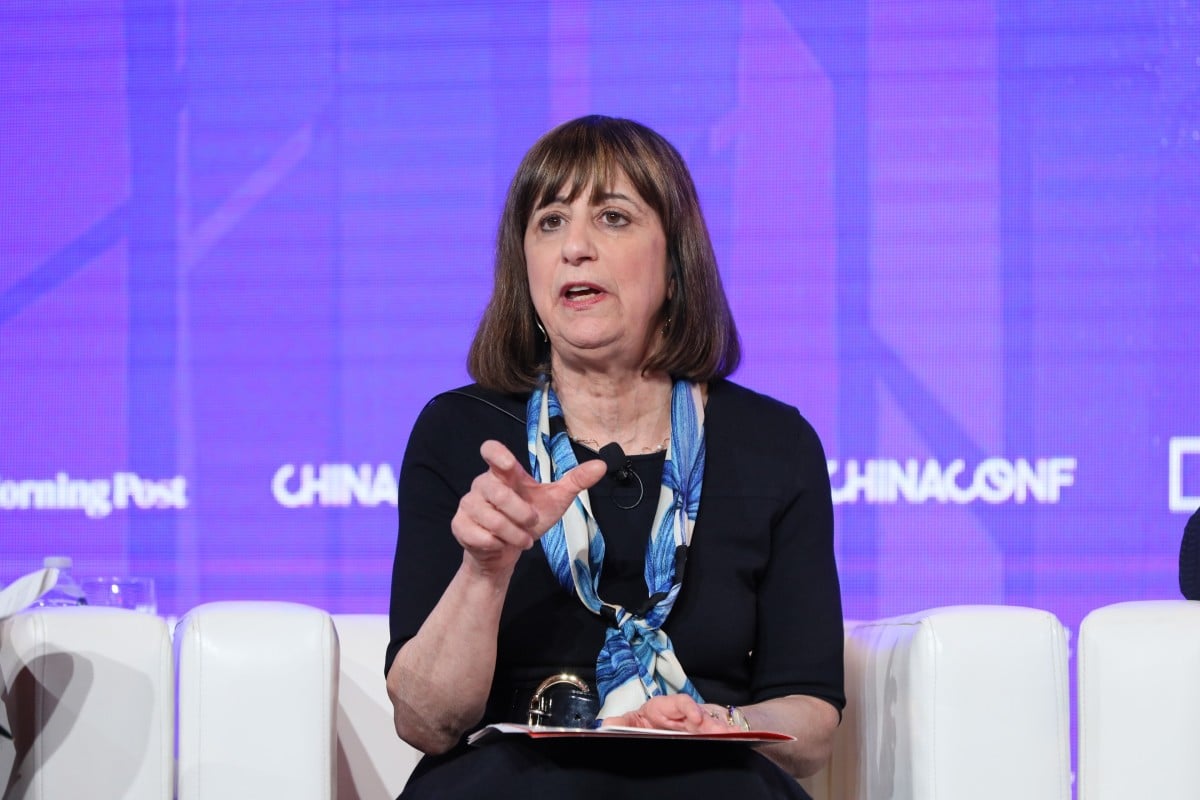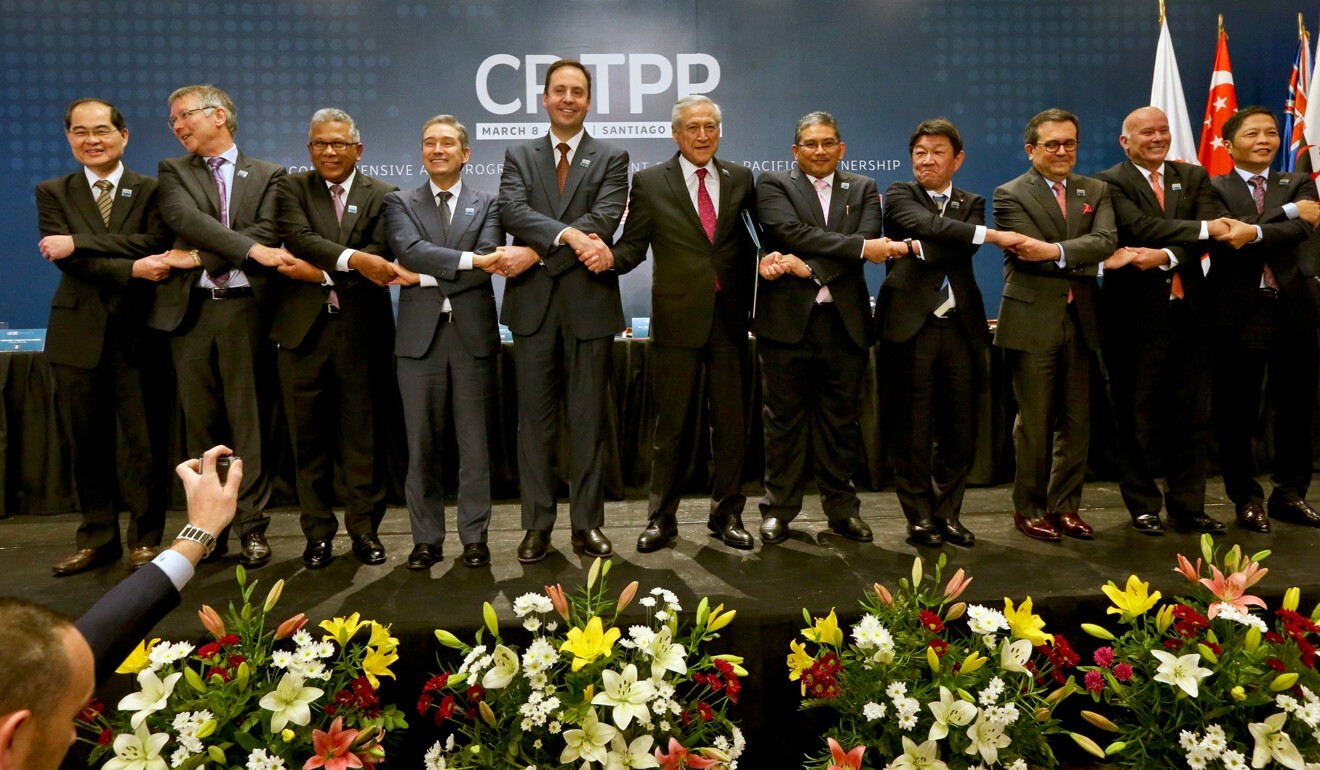Washington’s tariff hikes have not forced China to reform, former acting deputy trade representative Wendy Cutler says in think tank report
Next president should rejoin the 11-member Asia-Pacific agreement Donald Trump withdrew from in 2017, she argues

Wendy Cutler, the former acting deputy US trade representative, said the US could not counter China by working alone. Photo: Handout
A former US trade official is calling for the next US president to rejoin a trans-Pacific trade agreement as a means to working with like-minded countries and offering an alternative to China’s state capitalism.
Wendy Cutler, who was acting deputy US trade representative under former president Barack Obama, said the Comprehensive and Progressive Agreement for Trans-Pacific Partnership (CPTPP) was still the best way for the United States to redefine global trade and counter China. Her comments came in a report published on Wednesday by think tank the Asia Society Policy Institute, of which she is vice-president.
Formerly the Trans-Pacific Partnership (TPP), the CPTPP is one of the world’s largest multilateral free-trade agreements, accounting for 13.5 per cent of global GDP, and was seen by Beijing as a way for the Obama administration to contain China’s rise in the Pacific region.
The agreement was renamed after the
US, under President Donald Trump, withdrew in 2017, and came into force the following year, featuring 11 Asia-Pacific countries: Japan, Australia, Brunei, Canada, Chile, Malaysia, Mexico, New Zealand, Peru, Singapore and Vietnam.
Trump orders US withdrawal from trans-Pacific trade deal
The report contributed to by Cutler – “Re-engaging the Asia-Pacific on Trade: A TPP road map for the Next US Administration” – urges the next president to explore options for re-engaging with countries about the trade agreement.
“In recent years, the case for US participation in the TPP has only become more compelling as the political and economic importance of the Asia-Pacific region has grown and concerns about Beijing’s economic model have mounted,” Cutler said.
“With no end to tensions with China in sight, there is a growing recognition that the United States would be better off enlisting like-minded countries to rein in
unfair Chinese trade practices and to promote an alternative economic model to state-led capitalism, rather than going it alone. To date, US unilateral tariff hikes and export control restrictions have not led to meaningful Chinese reforms.”
The report suggested four options that the next US administration would have for re-engaging the CPTPP countries on trade: returning to the original TPP agreement, formally acceding to the CPTPP, seeking a broader renegotiation with the CPTPP as a baseline, or working on a narrower sector-specific deal as an immediate, interim step.

Representatives from the 11 CPTPP member countries mark the signing of the agreement in 2018. Photo: AP
Cutler said in the report that renegotiation of the trade deal could be one of the more likely options, with the US revising or adding provisions such as rules on origin, labour, environment and currency manipulation. This option, though time-consuming, could also open the door to expanding the deal for other accession candidates such as South Korea to join and reshape the agreement, Cutler argued.
She said the US can rebuild trust with CPTPP members by first pursuing an interim, sector-specific trade deal on an area such as digital trade, or trade in medical and other essential products in light of the vulnerabilities in supply chains exposed by the
coronavirus pandemic.
This article appeared in the South China Morning Post print edition as: US urged to rejoin Pacific trade agreement
“In recent years, the case for US participation in the TPP has only become more compelling as the political and economic importance of the Asia-Pacific region has grown and concerns about Beijing’s economic model have mounted,” Cutler said.
“With no end to tensions with China in sight, there is a growing recognition that the United States would be better off enlisting like-minded countries to rein in
unfair Chinese trade practices and to promote an alternative economic model to state-led capitalism, rather than going it alone. To date, US unilateral tariff hikes and export control restrictions have not led to meaningful Chinese reforms.”
The report suggested four options that the next US administration would have for re-engaging the CPTPP countries on trade: returning to the original TPP agreement, formally acceding to the CPTPP, seeking a broader renegotiation with the CPTPP as a baseline, or working on a narrower sector-specific deal as an immediate, interim step.

Representatives from the 11 CPTPP member countries mark the signing of the agreement in 2018. Photo: AP
Cutler said in the report that renegotiation of the trade deal could be one of the more likely options, with the US revising or adding provisions such as rules on origin, labour, environment and currency manipulation. This option, though time-consuming, could also open the door to expanding the deal for other accession candidates such as South Korea to join and reshape the agreement, Cutler argued.
She said the US can rebuild trust with CPTPP members by first pursuing an interim, sector-specific trade deal on an area such as digital trade, or trade in medical and other essential products in light of the vulnerabilities in supply chains exposed by the
coronavirus pandemic.
This article appeared in the South China Morning Post print edition as: US urged to rejoin Pacific trade agreement
No comments:
Post a Comment